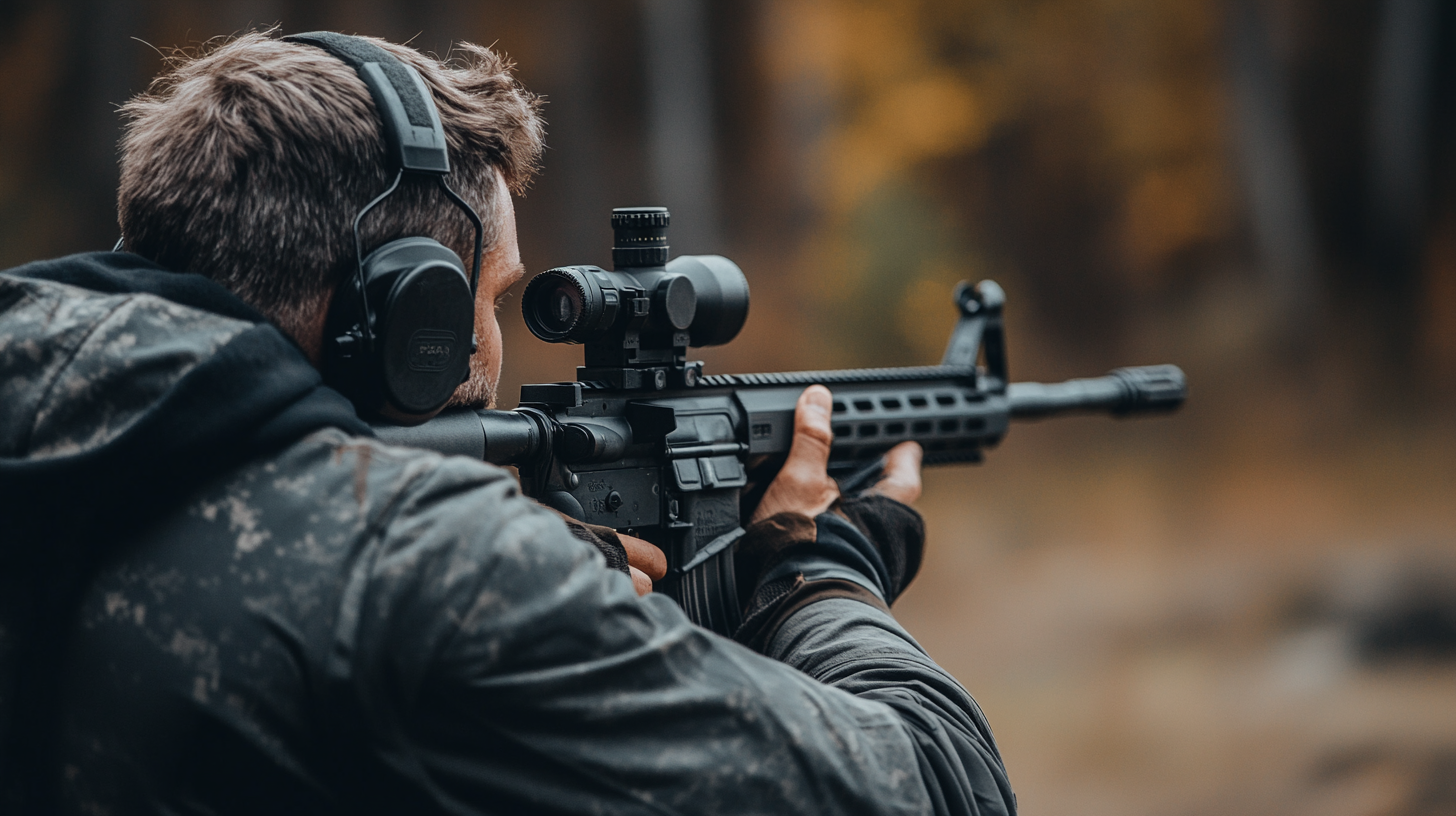Introduction to the Hearing Protection Act
The Hearing Protection Act is a significant legislative measure aimed at safeguarding workers from noise-induced hearing loss, a prevalent issue in many industries, especially those involving heavy machinery, construction, and manufacturing. This Act highlights the urgency of implementing effective hearing conservation programs, thereby ensuring a safer work environment for all employees. Its primary purpose is to establish standards for permissible noise exposure and to mandate the use of appropriate hearing protection devices across various workplaces.
This legislation addresses a critical public health concern—noise-induced hearing loss, which can lead to severe, lifelong consequences for affected individuals. Prolonged exposure to high decibel levels can result in irreversible damage to auditory functions, impairing communication and overall quality of life. Thus, understanding the implications of the Hearing Protection Act is not only vital for compliance but also for promoting a culture of health and safety in the workplace.
The Hearing Protection Act applies to employers and employees within industries where noise levels exceed the established safety limits. It obligates employers to assess noise exposure levels, provide adequate hearing protection equipment, and educate workers about the risks associated with noise exposure. Furthermore, it encourages frequent monitoring and maintenance of sound levels to ensure ongoing compliance. By fostering awareness and understanding of the Act, companies can mitigate the risks associated with occupational noise exposure effectively.
In summary, the Hearing Protection Act serves as a framework for protecting workers from the adverse effects of excessive noise in their environments. As industries evolve and the understanding of auditory health grows, this legislation remains crucial in ensuring that the safety and well-being of workers are prioritized across various sectors.
Key Provisions of the Hearing Protection Act
The Hearing Protection Act sets forth crucial guidelines aimed at safeguarding the auditory health of employees in environments where noise levels can be detrimental. One of the primary provisions established by the Act is the specification of permissible noise exposure levels. These levels are scientifically determined thresholds to mitigate the risk of hearing loss. Employers are mandated to assess noise levels within their operations and implement control measures where these thresholds are exceeded, thereby ensuring a safer working environment.
In conjunction with the permissible noise exposure levels, the Hearing Protection Act lays out specific requirements for hearing protection measures. Employers are responsible for providing appropriate hearing protection equipment to all employees exposed to hazardous noise levels. This may include earmuffs, earplugs, or other protective devices. Additionally, the Act necessitates that these protective measures be made accessible and be in good working condition at all times to ensure maximum effectiveness in noise reduction.
Another critical aspect of the Hearing Protection Act is the delineation of employer responsibilities in maintaining compliance. Employers must develop and implement a comprehensive hearing conservation program that includes regular monitoring of noise levels, employee training on the risks associated with excessive noise exposure, and proper use of hearing protection devices. Training requirements under the Act are designed to inform employees about the potential risks associated with noise exposure and the importance of utilizing hearing protection. These provisions not only enhance employee awareness but also empower workers to advocate for their own hearing health, ultimately fostering a culture of safety within the workplace.
The implications for employee rights under the Hearing Protection Act reinforce the importance of a compliant and proactive approach to workplace safety regarding hearing conservation. By understanding their rights, employees can ensure that necessary precautions are taken, thereby protecting their hearing health effectively.

Impact on Industries and Employers
The Hearing Protection Act has far-reaching implications for various industries, primarily those where noise exposure is a significant concern. One of the most impacted sectors is construction, where heavy machinery and equipment generate high decibel levels, necessitating the implementation of effective hearing protection measures. Employers in this field must comply with the Act by ensuring that workers are equipped with appropriate hearing protection devices and trained in their proper use. Failure to comply can lead to severe penalties and a potential increase in workplace injuries, underscoring the importance of adhering to safety regulations.
Manufacturing is another sector heavily influenced by the Hearing Protection Act. Many manufacturing plants operate in noisome environments, which can pose risks to employees’ hearing health. The Act necessitates that employers assess noise levels, inform employees of potential hazards, and provide effective hearing protection. Those who neglect these responsibilities may face fines and legal repercussions, which can impact overall business operations and employee morale. Thus, embracing the requirements of the Hearing Protection Act is not only a legal obligation but also a vital component of fostering a culture of safety in the workplace.
The entertainment industry is also affected by the Act, particularly in settings such as concerts and music festivals where sound levels can reach hazardous limits. Employers in this domain must proactively implement hearing protection strategies to safeguard the health of both performers and audience members. This may involve providing earplugs or sound shields, as well as educating staff and attendees about the risks of prolonged noise exposure. By adhering to the Hearing Protection Act, employers can minimize health risks while enhancing the overall experience for all involved.
In conclusion, the Hearing Protection Act serves as a critical framework for promoting safety across multiple sectors, emphasizing the need for employers to prioritize the well-being of their workforce through effective noise management and hearing protection measures.
Future of Hearing Conservation and the Hearing Protection Act
The future of hearing conservation is poised for significant improvements, driven by ongoing advancements in technology, changes in regulations, and heightened public awareness surrounding the Hearing Protection Act. As noise-induced hearing loss continues to affect a substantial portion of the population, the importance of adhering to the standards set forth by the Act becomes increasingly relevant.
One notable trend is the evolution of noise control regulations, which aim to further reduce permissible noise exposure levels in various workplaces. Governments may revise the Hearing Protection Act to incorporate more stringent exposure limits, particularly in industries known for high noise levels, such as manufacturing, construction, and entertainment. These regulations not only promote safer work environments but also advocate for the implementation of comprehensive hearing conservation programs.
Technological advancements play a pivotal role in improving hearing protection devices, ushering in more effective solutions for workers exposed to hazardous noise levels. Emerging technologies such as active noise cancellation and personalized hearing protection devices are designed to adapt to different environments, thereby ensuring that auditory health is prioritized. Manufacturers are also exploring innovative materials that enhance comfort and usability, increasing the likelihood of compliance among users.
In addition to regulatory changes and technological innovations, the ongoing need for public awareness regarding hearing loss prevention cannot be understated. Organizations and advocates must continue to educate individuals about the risks associated with noise exposure and the importance of adhering to the provisions established by the Hearing Protection Act. Initiatives such as workshops, seminars, and informative campaigns will play a critical role in fostering a culture of hearing protection that extends beyond the workplace.
Ultimately, continued advocacy and education are essential components in enhancing workplace safety and health standards. By harnessing the combined power of regulation, technology, and public awareness, the future of hearing conservation looks promising, ensuring that the legacy of the Hearing Protection Act remains vital in safeguarding auditory health for generations to come.
